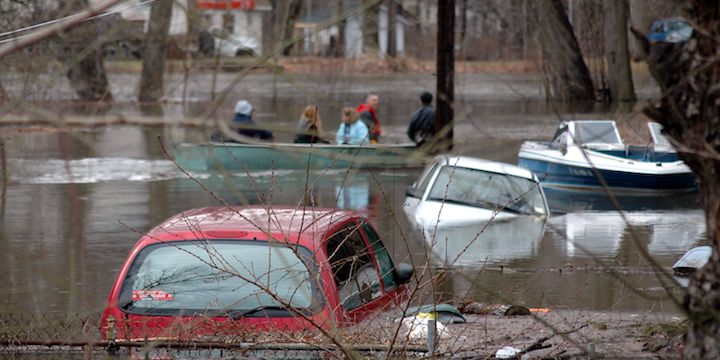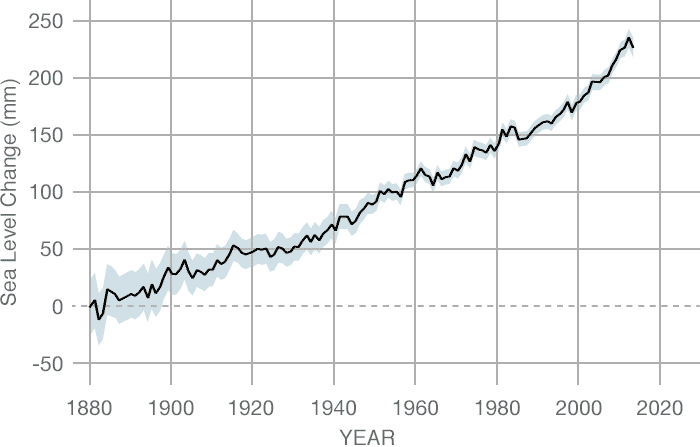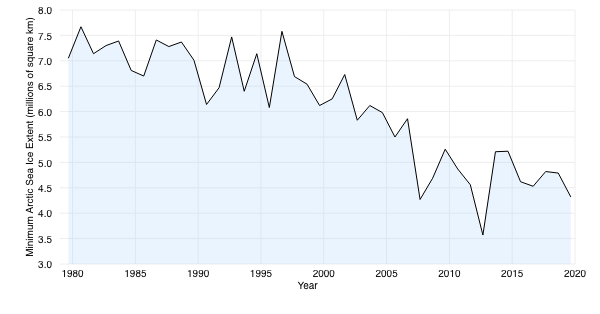
The hotter temperatures that the world is now experiencing (see Is the world really heating up?) have a significant impact on weather generally. On this page we examine how the weather is changing.
This page is a 2019 update of text written in 2012.
Changing patterns and extremes
Because the world is heating up, there is more energy in the climate system. This makes our wether systems less stable, just like a pot of water on the stove becomes less stable and more turbulent as it gets close to boiling.
The two most important impacts of rising temperatures are:
- Weather patterns are changing. For example, some places will experience more rain than they used to, others less, and the annual weather patterns won’t always remain the same.
- We are likely to experience more extreme weather. The greater amount of heat energy in the system leads to more frequent and more severe storms, floods, droughts, heatwaves and cyclones.
Some people point to years where the predicted effects of climate change (for example lower rainfall in an area, or rising temperatures) are not occurring, and say this is evidence that our climate isn’t changing. But this is generally a misunderstanding. Greater weather variability and more frequent extremes of both wet and dry are part of climate change.
Observed impacts on weather
Ocean levels
Rising temperatures lead to rising ocean water levels, because (1) Arctic & Antarctic ice is melting and adding water to the oceans, and (2) water expands as it warms.
Ocean levels have risen globally by about 15 cm in the past 100 years as the graph below by Australia’s CSIRO shows, and the current rate is about double that. This is increasing the impacts of storm waves and coastal erosion.

It is true that sea level has risen before, but that was when the earth’s human population was small and able to move to higher ground. That is much more difficult now.
Snow and ice melt

- Arctic sea ice (the summer minimum) is declining in extent by almost 13% each decade and its average thickness has decreased by 40 per cent over the last half century. This deterioration is getting worse. The extent of the Arctic ice has impacts on other aspects of climate.
- Glaciers are in decline, at a rate that is increasing.
- Snow cover and depth in the European Alps (and elsewhere) have declined significantly in the past 30 years..
Rainfall
Rainfall will become more variable and extreme – less rain in some locations but more in others, longer droughts, larger storm runoff over shorter periods of time and fewer years of “normal” rainfall and river flows.
For example the Australian Bureau of Meteorology has shown that parts of the arid Australian inland and northwest are now receiving significantly more rain than they did 50 years ago (though this isn’t saying much as it was previously very dry). Meanwhile, the productive farmland and major cities of the southeast are now receiving significantly less rainfall, decreasing at about 20-40mm per decade in most locations – and it will only get worse.
North Africa, already dry for the most part, is one location where further reduced rainfall is predicted.
Storms
Warmer air means clouds and storms can carry more moisture, so rainstorms and cyclones are already becoming more frequent and more destructive.
Is there any doubt?
About 97% of climate scientists, and over 200 scientific organisations (such as many national academies of science) are convinced that the data shows that climate change is a fact.
The scientists are convinced, because the data is there. The insurance industry is taking it seriously. It is happening, and it’s mostly bad.
Read more
- Climate Change: Global Temperature. NOAA Climate.gov
- How is Today’s Warming Different from the Past? NASA.
- Instrumental temperature record. Wikipedia.
- 2018 fourth warmest year in continued warming trend, according to NASA, NOAA. NASA.
- Australia in 2018: a climate system on steroids. Climate Council (Australia).
- A look at how people around the world view climate change. Pew Research Centre.
Next: Climate change: causes and remedies
Photo: MorgueFile.